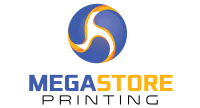The following guidelines will help you make sure your artwork meets our production specifications.
Logo Guidelines
Full-Color Printing
Logos that will be used in the production of full color printed items such as posters, brochures, and business cards should adhere to the below specifications.
- Vector (PDF, AI, EPS) format or 300 DPI Raster (PSD, TIF, JPG) format
- Created in CMYK (not RGB) color space
- All type converted to curves
Spot Color Printing
Logos that will be used in the production of spot color items (such as forms) or that will be used as an imprint on promotional materials should adhere to the below specifications.
- Vector (PDF, AI, EPS) format or 300 DPI Raster (PSD, TIF, JPG) format
- Solid spot colors or black only
- No screens/gradients
- All type converted to curves
Download Our Templates or Design Online
We have provided templates that are pre-sized and that include marks to help you set up your file. They are available on the “Download Templates” tab on each product in our store. Click on the icon for your design software or the PDF for a generic version. There is a Marks layer in each template - be sure to turn that layer off before uploading your final art.




Safe Area, Trim, and Bleed
To avoid having text or images cut off during trimming, please keep all important information within the safe area, indicated by a dashed line on our templates or by a green dashed line in our online editor. This is generally .125″ inside the trim line. On some templates, the trim line is indicated by the document edge, on others, there are crop marks. Please extend any background colors or design elements all the way to the bleed line of your document. In the image below, the bleed area is indicated in grey. To be at full bleed, the design must extend to the edge of this grey area. This ensures that an unwanted white border is not shown after the document is cut.

When your document has a fold, honor a safe area on either side of the fold line as well. This will keep your important information from falling into the fold when the piece is finished.
Design in Four-Color Process
To achieve the best color results on your final product, you should convert your document to use the CMYK color definition. This is the color space used by professional printers. RGB is used by your computer monitor. Using RGB on your artwork will cause color variation in the printed version compared to what you see on your screen. If your software allows color profiles, use CMYK: Web Coated (SWOP) v2 to view the most accurate representation of your final printed colors.
When using our online editor, your colors are rendered in RGB. We will convert to four-color process before producing your project. There may be some color shifting as a result. If your design is complicated or has a lot of critical color values, it might be best to download a template and design offline, then send us your completed design for production through our file upload tool.

Vector Images vs. Raster Images
It is best to use vector graphics when possible as opposed to raster or bitmap images in your designs. Vector images define areas with mathematical equations, while raster images are composed of tiny dots called pixels. Pixels placed close together fool our eyes into seeing a continuous area of color. When you need gradients or photographs, raster images are generally your best option for this reason. However, because a raster image contains a fixed number of dots, when you enlarge it, the raster image’s ability to fool the eye suffers. There will be more space between the dots and the dots get larger. Raster images used in printing should be as close to 300 DPI (dots per inch) as possible. The lower resolution may result in “pixelation” or fuzzy images, as seen below.

Convert Text to Curves
In some graphics programs, text can be converted to outlines or curves. Doing so ensures that your text remains intact even if we don’t have your font on file. The text is no longer editable once this is done, so make sure you’ve checked your spelling.

Uploading Your Files
You may send us artwork in one of four ways: Uploading during purchase, designing your art in our online editor, uploading through an external FTP server, or sending us a CD either by mail or courier (for local customers).
File upload during your purchase is the simplest method. You may upload a single file (no larger than 30 MB) in the following formats: PDF, AI, PSD, INDD, TIF, JPG, EPS, ZIP, and RAR. The last two formats are archive formats. Please compress artwork with multiple files into one of these archives before uploading.
Our online editor is a simple design tool that allows you to create your art on our website. Upload images, place them into documents set up with the proper safe area and bleed and choose from dozens of typefaces to create your artwork. Approve your art online and submit with confidence.

External FTP is intended for use when your compressed file exceeds 30 MB, when you have previously submitted artwork and need to send something that was missing or that has been revised, or if (through discussion with one of our CSRs) you need to send a file with an extension that isn’t allowed through our upload tool. The FTP link will be provided to you via email or live chat, along with instructions.
If neither of the above options will work for you, you may send us a CD via mail or courier. Our physical address is located at the bottom of this page in the “Contact Us” block. We are available to receive deliveries Monday through Friday, 8am – 5pm, excluding holidays.
